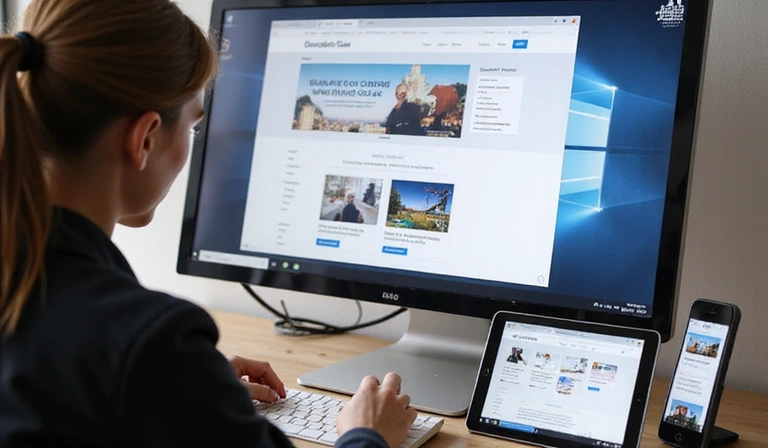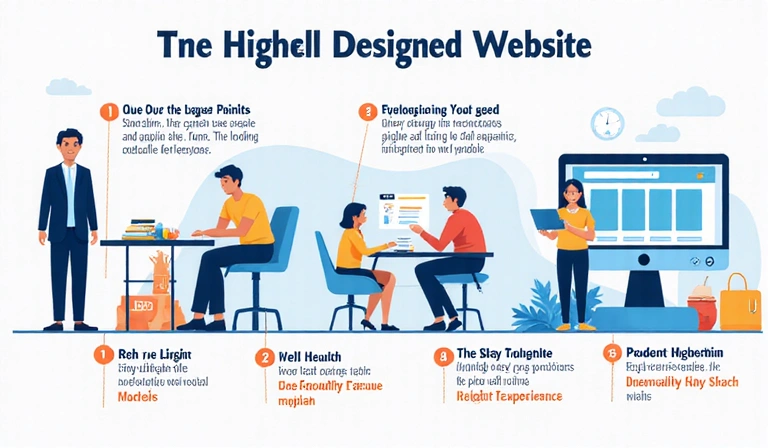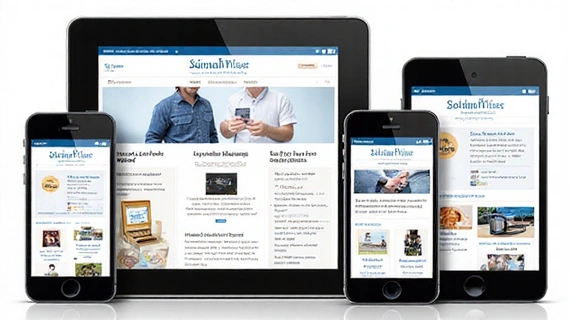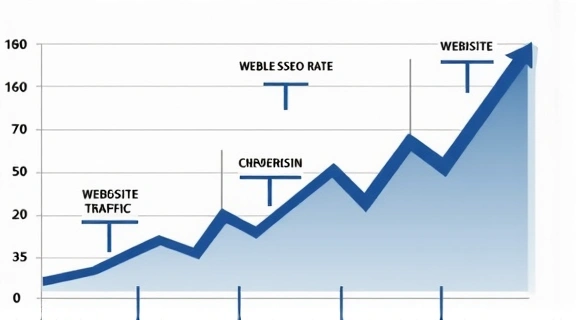Mastering the Art of User-Centric Web Design
By Jane Doe | April 5, 2024 | Category: Web Design, UX/UI Design

In the vast and ever-evolving landscape of the internet, a website's success hinges not just on its visual appeal or technical prowess, but fundamentally on how well it serves its users. User-centric design (UCD) is an iterative design process in which designers focus on the users and their needs in each phase of the design process. This approach is paramount for creating digital experiences that are intuitive, efficient, and enjoyable, ultimately leading to higher engagement and conversion rates.
At Web Design Studio Pro, we embed UCD principles into every project, ensuring that the end product is not only beautiful but also highly functional and aligned with user expectations. This article delves into the core components of user-centric web design and how you can apply them to elevate your digital presence.
Understanding Your Audience: The Foundation of UCD
The first and most critical step in user-centric design is to thoroughly understand who your users are. This goes beyond simple demographics and delves into their behaviors, motivations, pain points, and goals. Techniques for gaining these insights include:
- User Research: Conducting surveys, interviews, and focus groups to gather qualitative and quantitative data.
- Persona Development: Creating detailed profiles of your ideal users, including their backgrounds, needs, and typical online habits.
- Empathy Mapping: Visualizing user attitudes and behaviors to gain a deeper understanding of their experiences.
- Journey Mapping: Charting the entire user experience with your product or service, identifying touchpoints and potential frustrations.
By investing time in understanding your audience, you can make informed design decisions that resonate directly with their needs, rather than relying on assumptions.

Iterative Design and Testing
UCD is not a linear process but an iterative cycle of design, prototype, test, and refine. This continuous feedback loop ensures that the design evolves based on real user interactions and data. Key stages include:
- Information Architecture (IA): Organizing and labeling content in a way that is logical and easy for users to navigate.
- Wireframing and Prototyping: Creating low-fidelity representations of your website's layout and functionality to test concepts early.
- Usability Testing: Observing real users interacting with your prototypes or live site to identify usability issues and areas for improvement. This can range from moderated lab tests to unmoderated remote testing.
- A/B Testing: Comparing two versions of a webpage or component to see which performs better with users.
Each iteration brings you closer to a design that truly meets user needs and expectations, minimizing redesign costs and maximizing user satisfaction.
"Good design is actually a lot harder to notice than bad design, in part because good design fits our needs so well that the design is invisible."- Don Norman, The Design of Everyday Things
Accessibility and Inclusivity
A truly user-centric design considers all users, including those with disabilities. Designing for accessibility ensures that your website is usable by as many people as possible, regardless of their physical or cognitive abilities. This not only broadens your audience but also reflects a commitment to inclusivity and often improves SEO.
Key accessibility considerations include:
- Semantic HTML: Using appropriate HTML tags for their intended purpose to aid screen readers and other assistive technologies.
- Keyboard Navigation: Ensuring all interactive elements can be accessed and operated using only a keyboard.
- Color Contrast: Providing sufficient contrast between text and background colors for readability.
- Alt Text for Images: Describing images for users who cannot see them.
- Clear and Concise Language: Using straightforward language that is easy to understand.
Adhering to Web Content Accessibility Guidelines (WCAG) is not just a best practice; in many regions, it's a legal requirement.
The Role of Aesthetics and Performance
While functionality is key, aesthetics and performance play a significant role in user experience. A visually appealing and fast-loading website creates a positive first impression and encourages users to stay longer. This involves:
- Clean UI: A well-organized, uncluttered interface that guides the user's eye.
- Consistent Branding: Maintaining a consistent visual identity across all pages.
- Optimized Images and Code: Ensuring fast loading times through image compression, minified code, and efficient server responses.
- Mobile Responsiveness: As discussed earlier, ensuring your site adapts seamlessly to any device.
In conclusion, user-centric web design is an ongoing commitment to putting your users first. By understanding their needs, iterating on your designs, ensuring accessibility, and optimizing for performance and aesthetics, you can create websites that not only look great but also deliver exceptional value and drive business success. Partner with Web Design Studio Pro to transform your digital vision into a user-loved reality.








